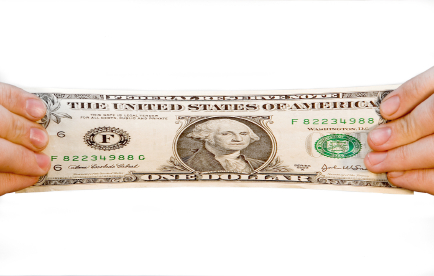With millions out of work, complaints about the decline in middle-class wages may seem misplaced. But without some shoring up, the middle class will remain dispirited -- and our economy, which is 70 percent dependent on consumer spending, will remain in the dumper.
It may be that there's a role for government to play in buttressing these eroding wages, which result not only in a declining standard of living, but also in a family life so pressure-filled that it leads to its own problems: angry homes, fast-food diets, dependence on alcohol and drugs.
Calling for any sort of government role during these tea party times can raise charges of socialism. But the idea of a wage that supports some minimum standard of living -- shelter, clothing, food -- has been broached on and off for more than a century.
In the late 1800s, social activists began protesting wages earned by a working-class man that were not sufficient to sustain his family, without the additional wages of working children and mothers. The Catholic Church published a fundamental social teaching, "Rerum Novarum" (on capital and labor), that read, "Wealthy owners of the means of production and employers must never forget that both divine and human law forbid them to squeeze the poor and wretched for the sake of gain or to profit from the helplessness of others."
Shortly afterward, Australia's courts ruled that an employer must pay a wage that guaranteed a standard of living that was reasonable for "a human being in a civilized community" for a family of four to live in "frugal comfort."
In the United States, these ideas led to laws forbidding child labor, making education compulsory and protecting women from exploitive labor conditions. The campaign to establish a "family wage" was defeated, but in 1938, a lower standard, the federal minimum wage, was passed.
The Rev. Martin Luther King Jr., Daniel Patrick Moynihan and in 1968, a group of 1,200 economists including Paul Samuelson and John Kenneth Galbraith, have all supported some kind of minium income guarantee.
Echoes of this debate are being heard now, in the Vatican's critique last week of the global financial system, and in places where labor unions still have some sway: In the New York City Council, which at the urging of retail workers may require employers in commercial developments built with public subsidies to pay at least $10 an hour, a "living wage" higher than the minimum wage of $7.25; and in Albany, where the State Legislature in April passed an increase to $9 an hour for home health aides, who are represented by the influential 1199 SEIU United Health Care Workers East. That increase takes effect on Long Island in 2013.
It's easy to see why the lowest-paid workers would need a boost from someone powerful enough to argue on their behalf. But to make the argument for the middle class, one has to believe that this great swath of America, nearly half the country, has special value. And it does: The stability and upward mobility of the middle class not only underpin the U.S. economy but give America its famously optimistic and innovative spirit.
That spirit is on display as the middle class makes the best of things today: The average American has added around a month's worth of work, 164 hours per year, in the last two decades. One-third of American families have reduced their savings for college, according to a 2010 Sallie Mae/Gallup poll, and another 15 percent are not saving at all. Retirement savings are in similar decline.
How much more can the middle class cinch in its belt, before we lose what's precious about this way of life?

